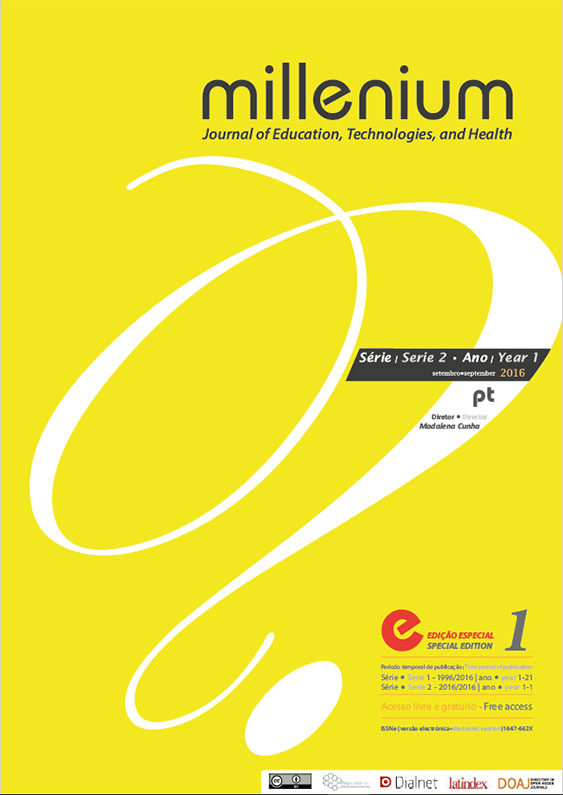Intervention program for university students: Accession Predictors Programa de intervención
Keywords:
Predictors, Programmes, HIV, Students, Odds RatioAbstract
Introduction: Literature largely suggests that longitudinal studies where participation is not mandatory and participants have no immediate benefits are usually subject to compliance failures.
Methods: We looked at the predictors of adherence to an intervention program in reducing the risk of HIV infection. Inclusion criteria included being a 1st-year-student of the University of Coimbra and 18 to 24 years old. A questionnaire with indicators of UNAIDS was employed.
The quantitative study included two stages: in the first one 551 youths agreed to complete the questionnaire and participate; in the second stage the survey respondents and those who joined the programme were signaled. Respondents were 18 years old(SD = 1.09) , 76.2 % female, 63% were Health Sciences students and 69.2 % sexually active.
Results: The model features ten independent variables (age, sex, perception of risk, scientific area, time of first sexual intercourse, number of sexual partners over the lifetime and in the last twelve months, knowledge of transmission and prevention). Four independent variables had a statistically significant contribution (perception of risk, scientific area, early sex life and number of sexual partners in the last twelve months). The best adherence predictor was the age of sexual initiation, with odds of 3.63 (OR = 3.63; 95% CI 1.27 - 8.91), indicating that students who began their sexual life are three times more likely to join a program. The odds ratios of 1.98 (OR = 1.98; 95% CI 1.27 - 2.87) and 1,784 (OR = 1.78; 95% CI 1:04 to 3:07) indicate that students health and greater risk perception are about twice as likely to join. The variable “sexual partners in the last 12 months” is also a predictor of adherence and tells us that the abstinent have 0.três times more likely to join (OR = 0:32; 95% CI 0:12 - 0.81).
Conclusions: It seems to indicate that the information campaigns, awareness and prevention do not offer an effective model of awareness of the problem and risk perception to students that do not follow courses in health.
Downloads
References
Cunha-Oliveira, A., Cunha-Oliveira, J., & Massano Cardoso, S. (2016). VIH/ Sida: Situação da prevenção em Portugal e o contexto europeu. Debater a Europa, 14, 141-174.
Cunha-Oliveira, A., Cunha-Oliveira, J., Massano Cardoso, S., & Pita, J. R. (2014). Behavioral interventions for prevention of sexually transmitted infections in university students over 36 months. Atención Primária, 46(Especial Congreso I), 28-28.
Cunha-Oliveira, A. (2013). Predictors of adherence of young graduates to a program of educational intervention for prevention of infection by the human immunodeficiency virus. Psychotherapy and Psychosomatics, 82(Supll. 1), 24.
Diniz, A., Duarte, R., Bettencourt, J., Melo, T. de, Gomes, M., & Oliveira, O. (2015). Portugal: Infeção VIH, SIDA e Tuberculose em números – 2015. Lisboa: DGS. Acedido em http://www.dgs.pt/?cr=29118
Dutta-Bergman M. J. (2004). Health attitudes, health cognitions, and health behaviors among Internet health information seekers: Population-based survey. Journal of Medical Internet Research 26(2), e15. doi:10.2196/jmir.6.2.e15.
European Centre for Disease Prevention and Control, & World Health Organization Regional Office for Europe. (2013). HIV/AIDS surveillance in Europe: 2013. Stockholm: ECDC. doi:10.2900/42271.
Koelen, M. A., & Van den Ban, A. W. (2004). Health education and health promotion. Netherlands: Wageningen Academic Publishers .
Massano Cardoso, S. (2004). Notas e técnicas epidemiológicas (5ª ed.). Coimbra: Instituto de Higiene e Medicina Social da Faculdade de Medicina da Universidade de Coimbra.
Sirard, J. R., Pfeiffer, K. A., & Pate, R. R. (2006). Motivational factors associated with sports program participation in middle school students. Journal of Adolescent Health, 38(6), 696-703.
Portugal, Direção-Geral da Saúde. (2012). Programa nacional para a infecção VIH/SIDA: Orientações programáticas. Lisboa: DGS. Acedido em http://www.pnvihsida.dgs.pt/programa-nacional111111111/orientacoes-programaticas11.aspx
Portugal, Direção-Geral da Saúde. (2015a). Recomendações portuguesas para o tratamento da infeção por VIH-1 e VIH-2: Versão 1.0. Lisboa: DGS. Acedido em https://www.dgs.pt/documentos-e-publicacoes/recomendacoes-portuguesas-para-otratamento-da-infecao-por-vih-1-e-vih-2-versao-10-2015.aspx
Portugal, Direção-Geral da Saúde. (2015b). Doenças de Declaração Obrigatória 2011-20
Verheijden, M., Bakx, J.C., Akkermans, R., Van den Hoogen, H., Godwin, N. M., Rosser, W., van Staveren, W. & van Weel, C. (2004).
Web-based targeted nutrition counselling and social support for patients at increased cardiovascular risk in general practice: randomized controlled trial. Journal of Medical Internet Research, 6(4), e44. doi:10.2196/jmir.6.4.e44
Downloads
How to Cite
Issue
Section
License
Authors who submit proposals for this journal agree to the following terms:
a) Articles are published under the Licença Creative Commons (CC BY 4.0), in full open-access, without any cost or fees of any kind to the author or the reader;
b) The authors retain copyright and grant the journal right of first publication, allowing the free sharing of work, provided it is correctly attributed the authorship and initial publication in this journal;
c) The authors are permitted to take on additional contracts separately for non-exclusive distribution of the version of the work published in this journal (eg, post it to an institutional repository or as a book), with an acknowledgment of its initial publication in this journal;
d) Authors are permitted and encouraged to publish and distribute their work online (eg, in institutional repositories or on their website) as it can lead to productive exchanges, as well as increase the impact and citation of published work
Documents required for submission
Article template (Editable format)





